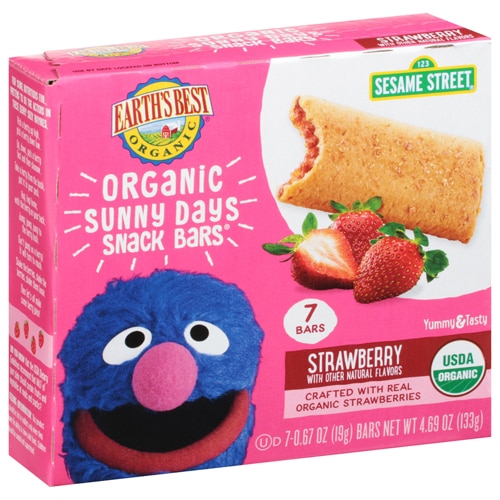Picky eaters are the bane of parenting. We've all had one. Anyone who tells you they haven’t is either lying or delusional from the trauma of trying to feed a child that only eats “white” food for three months straight. But discerning between general childhood stubbornness and detrimental eating habits can be confusing at a minimum.
Why does it happen?
Despite what the elders may say, there very much were picky eaters back in their day. Though our social and parental approach to the issue was vastly different. Luckily, we have since learned that these kids aren’t just spoiled brats who want to skip eating their lima beans and go straight to hot fudge sundaes. Rather, there can be a couple legitimate developmental things at play here.
First of all, there are specific points in physical development that biologically program children to avoid unfamiliar foods. When toddlers start walking and are able to stray from their mother’s immediate sight, they are more at risk for eating something they shouldn’t because, as we all know, toddlers put everything and anything in their mouths. In this way, food aversion is actually a protective instinct and typically something they grow out of as they continue to be introduced to foods at home.
For some older kids, it’s as simple as not having been exposed to different types of foods. Introducing many types of foods to your kids starting at a young age can help shape their palate. Certain flavors and textures are more common in some cultures than others. What’s a staple ingredient or spice for one family can be a total red flag for a child from another family. Because of these vast differences, it’s important to avoid getting angry or forcing kids from other families to eat something you are serving.
And then, there’s no denying that sometimes it’s a straight up power struggle.
Additionally, there are higher reported rates of food selectivity in children diagnosed with autism spectrum disorders and sensory processing disorders[1]. For these children, specific food aversions are often based on temperature, texture, smell or color.
What can you do?
Instead of fighting, begging, threatening, and bargaining, which we all know we typically lose, if you’re faced with what can be affectionately referred to as a “spirited child” there are some sneaky ways around it.
For most kids the biggest aversion is vegetables or green foods. You can go with the old standby of hiding veggies in foods like smoothies, pastas sauces and breads. If that works, you’ve got it made. There are tons of recipes out there, entire books even, dedicated to this parental manipulation. Grab one of those and go to town.
Letting your head strong little one pick out a new food to try each time you go grocery shopping is a fantastic way to give them the autonomy they are so desperately fighting for. Make it a game by creating a bingo board to fill up or color in a rainbow for the younger ages. When it’s really about control, and not the actual food, making it a team effort or downright fun will ease the tension.
Another great approach, which is especially successful with the stubborn and independent set, is putting them in charge of mealtime. Of course, you need to set parameters because you don’t want to be eating donuts and pizza for dinner (or maybe you do, but that’s another issue), and the recipes should utilize age appropriate cooking methods. Given you have all of this covered, you may be pleasantly surprised at what they choose.
Picky eating score sheet
- Dislike of 1-2 foods
- Adverse to specific type of food (fruit/vegetable/etc)
- Refusal to eat any of a specific type of food
- Refusal to eat anything BUT one type of food
- Dislike of foods of one color
- Adverse to food of one color
- Refusal of foods of one color
- Refusal to eat anything BUT one color food
- Dislike of one specific texture
- Adverse to more than one texture
- Refusal to eat one specific texture
- Refusal to eat anything BUT one specific texture
Dislike = 1 pt Adverse = 2 pt Refusal = 3 pt
Scoring
3-7 pts Picky but manageable
8-12 pts Stubborn as a mule
13-18 pts Cause for concern; consult your pediatrician
When should you worry?
Most children do not starve themselves to malnutrition from their ridiculous picky eating. In all of the push and pull to get them to eat something, anything, you might not even notice that they’re eating a more balanced diet than you realized.
Keep a journal or log of what your child eats for a month. When you look at it on a weekly scale or monthly basis, more likely than not you’ll find that over the course of a week or two they are getting most of their nutritional needs met.
If you find a hard and fast pattern of your child eating less than five foods or only eating one type of texture or flavor, this may be a sign of a sensory processing disorder or part of a greater cluster of symptoms of autism spectrum disorder.
Trying to force a child with a sensory processing disorder can cause significant emotional trauma. Don’t do this, regardless of how helpless and frustrated you may find yourself. Consult your pediatrician and seek professional help. There are types of occupational and physical therapy that can help your child expand their diet and make progress toward better nutrition.
[1] Food selectivity and sensory sensitivity in children with ASD https://www.ncbi.nlm.nih.gov/pmc/articles/PMC3601920/




